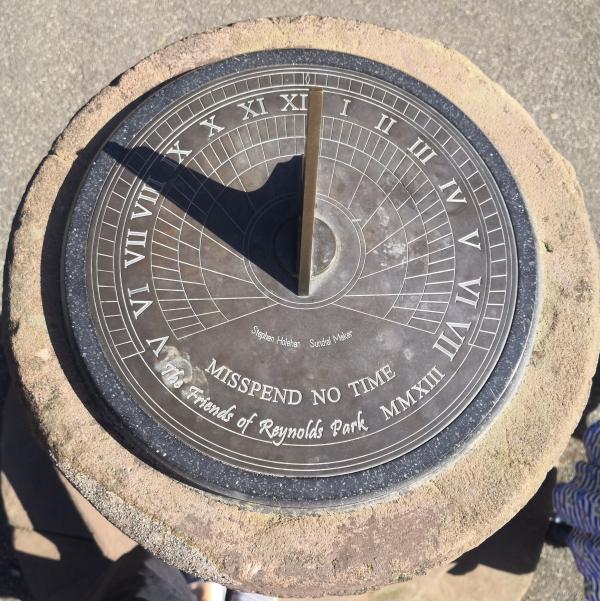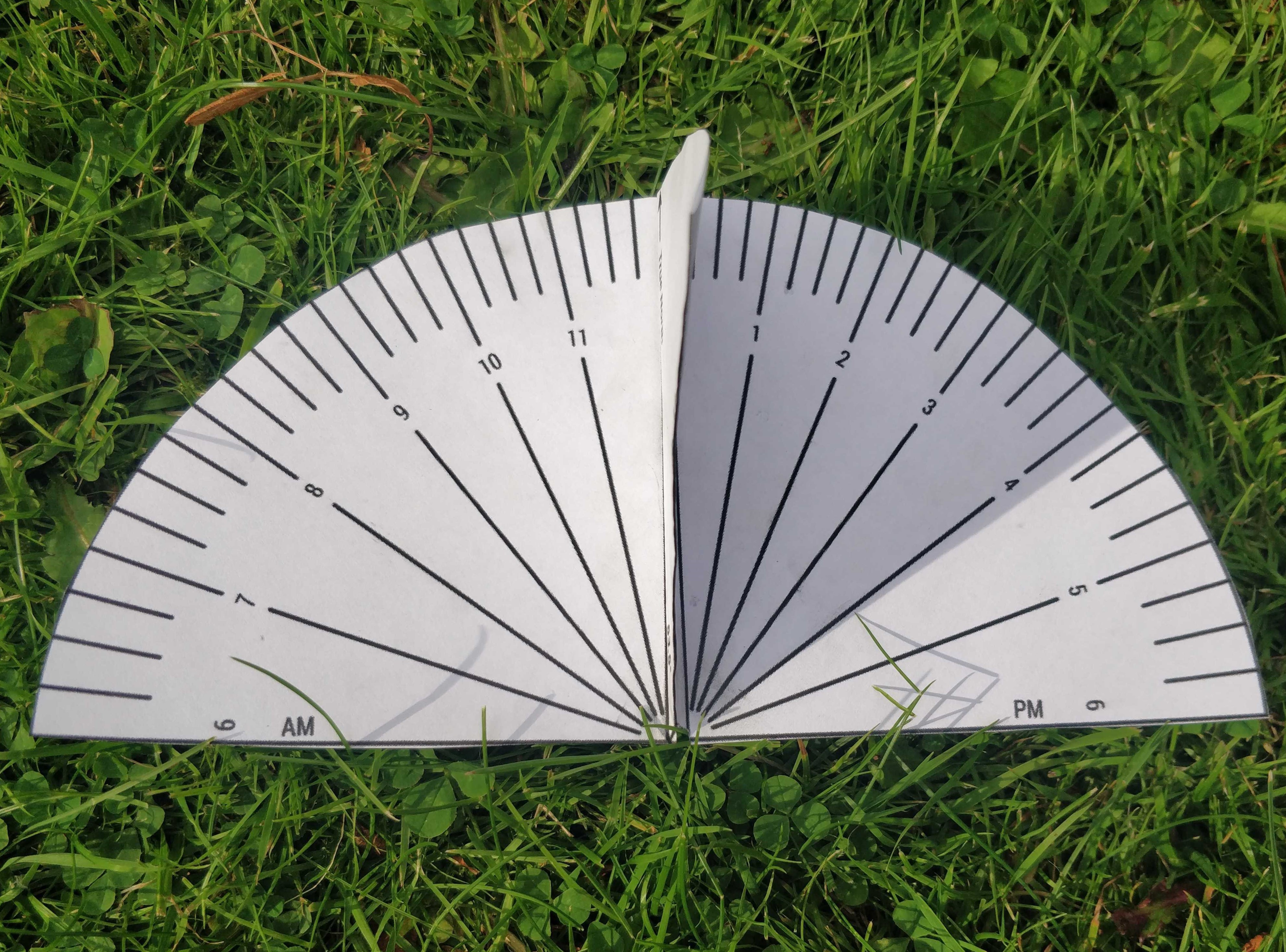By the end of this resource you will:
- have made your own sundial
- understand how a sundial works
- know how to use a sundial to tell the time
To complete this resource you will need:
- printed sundial sheet (choose the location closest to where you live)
- scissors
- glue
- a compass for finding north (most smartphones have a built-in compass)
Files Needed
Sundial Sheet - Edinburgh (PDF)
(254.87 KB)
Sundial Sheet - Manchester (PDF)
(511.76 KB)
Sundial Sheet - London (PDF)
(256.62 KB)

Credit: The Schools' Observatory
Approx Duration
15 - 30 mins
Have a go!
Make the sundial

Credit: The Schools' Observatory
- Cut around the outer edge of the sundial on the worksheet.
- Fold the sundial in half along the Centre Vertical Line so that the printed side is on the outside.
- Fold along each of the True North lines so the printed side is on the inside.
- Unfold your sundial and pinch along the centre fold so that the True North lines are back-to-back - this should create a triangle that sticks up. This triangle is called the gnomon (the 'g' is silent).
- Put some glue inside the back of the gnomon and press the sides together to make sure it holds its shape.
Use your sundial to tell the time
- Take your sundial outside (you may need to wait for a reasonably sunny day).
- Use your compass to find which way is north.
- Position your sundial on the ground or on a table so that the True North arrows are pointing north.
- The gnomon should cast a shadow. The numbers around your sundial are a bit like the numbers on a clock. Look where the shadow falls. That will tell you what time it is.
Don't worry if the time your sundial gives you is not the same as a clock. Sundials can tell you which hour you are in, but not the exact minute. That's why we now use clocks! If your sundial is an hour slower than your watch, it might be because your watch is set to British Summer Time rather than Greenwich Mean Time.
Can you answer these questions?
- Why does the sundial create a shadow?
- Why does the position of the shadow change with time?
- What happens to the shadows if the Sun is higher or lower in the sky (hint: think about their length)?
If you liked this, why not try
